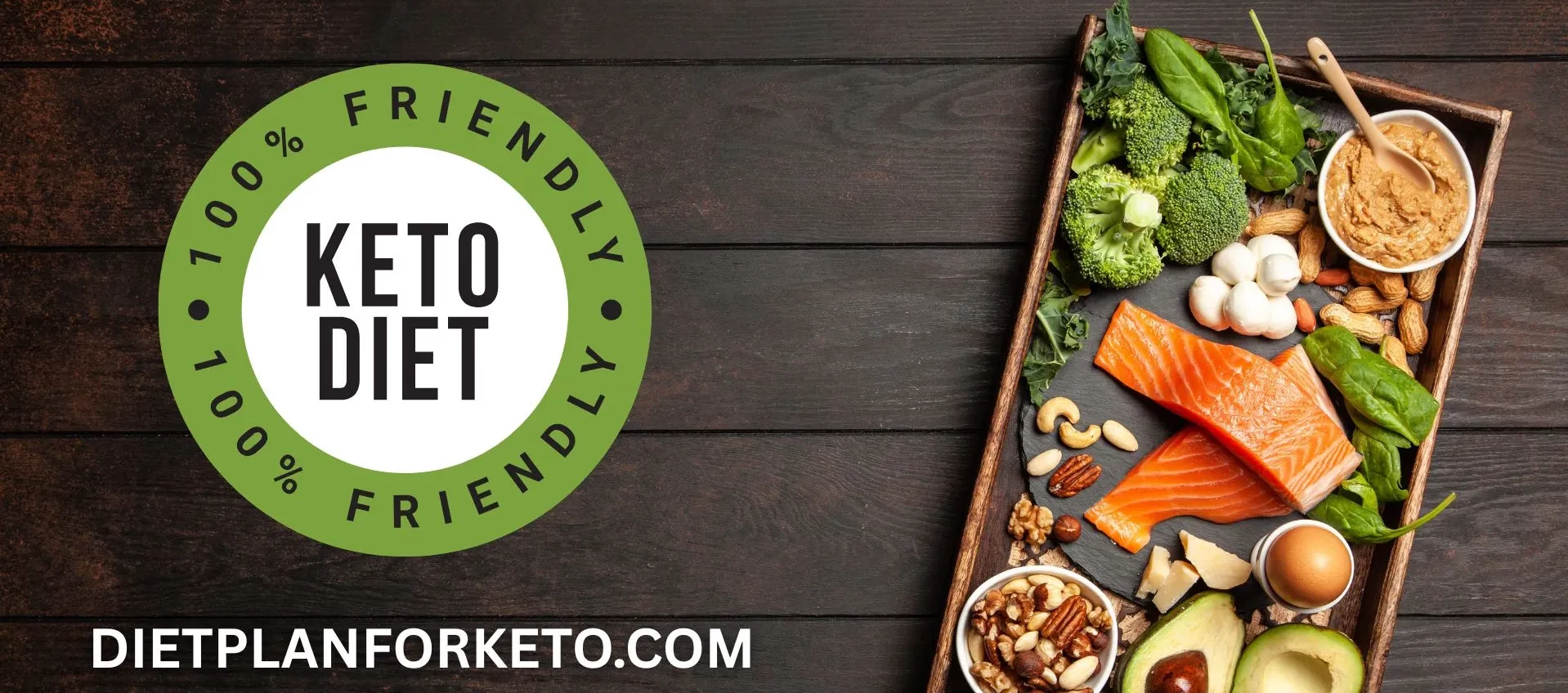Starting a ketogenic (keto) diet can be an exciting and empowering journey toward better health and weight loss. But one of the most critical components of long-term success is setting realistic, achievable goals.
In this comprehensive, beginner-friendly guide, you will learn how to approach goal-setting on keto with clarity, confidence, and a practical mindset.
We’ll walk through the science, strategies, common pitfalls, and tracking tools to help you get the best results possible.
Table of Contents
- Understanding the Keto Diet Basics
- Why Goal Setting Matters on Keto
- Step-by-Step: How to Set Realistic Keto Weight Loss Goals
- Common Mistakes to Avoid
- Realistic Weight Loss Expectations on Keto
- Tracking Your Keto Progress
- Staying Motivated and Accountable
- Tips for Sustained Success
- Pros and Cons of Keto Weight Loss
- Additional Resources for Deeper Learning
- Conclusion
- Disclaimer
1. Understanding the Keto Diet Basics
The ketogenic diet is a high-fat, moderate-protein, low-carbohydrate eating plan that shifts your body into a metabolic state called ketosis. In ketosis, your body burns fat for fuel instead of glucose, which is derived from carbohydrates.
Core Keto Guidelines:
- Keep net carbohydrates under 20-50 grams per day
- Eat healthy fats such as avocados, olive oil, and nuts
- Include moderate protein from quality sources
- Eliminate sugar, grains, and most fruits
Health Benefits May Include:
- Weight loss
- Reduced appetite and cravings
- Improved blood sugar control
- Enhanced mental clarity
- Better energy levels
2. Why Goal Setting Matters on Keto
Without a clear roadmap, it’s easy to lose direction or motivation. Vague goals like “get healthier” or “lose weight” lack the precision needed for long-term commitment. Setting structured, personalized goals helps you:
- Stay consistent and focused
- Build momentum with small wins
- Recognize progress beyond the scale
- Adjust strategies proactively when needed

3. Step-by-Step: How to Set Realistic Keto Weight Loss Goals
Step 1: Define Your “Why”
Dig deep into the real reason you’re starting keto. Whether it’s to lower your blood pressure, feel confident in your clothes, or have more energy to keep up with your kids, writing down your “why” creates emotional investment.
Step 2: Set SMART Goals
Use the SMART framework to create effective goals:
- Specific: Define what you want (e.g., lose 15 pounds)
- Measurable: Track with a scale, measurements, and photos
- Achievable: Set realistic numbers for your lifestyle
- Relevant: Align with your personal health priorities
- Time-bound: Add a deadline to create urgency
Step 3: Break Down Large Goals
Avoid overwhelm by dividing your main goal into smaller milestones. For example, instead of aiming to lose 40 lbs, break it into 5-lb increments.
Step 4: Include Non-Scale Victories (NSVs)
Weight loss isn’t the only sign of progress. Track wins like:
- More energy
- Reduced bloating
- Better sleep
- Clearer skin
- Mental clarity
Step 5: Choose a Timeline Based on Science
Expect initial water weight loss in the first 1-2 weeks. After that, 1-2 lbs per week is a safe, sustainable pace. Don’t rush it—this is about creating a lifestyle.
Step 6: Document and Revisit Goals
Write your goals somewhere visible. Reassess every 2-4 weeks to stay on track and adjust if needed.
4. Common Mistakes to Avoid
Even with good intentions, many beginners fall into common traps that hinder their keto progress.
Avoid These Mistakes:
- Setting aggressive or unrealistic timelines
- Ignoring macro and calorie intake
- Not staying hydrated
- Relying solely on the scale
- Skipping electrolyte replenishment
- Giving up too soon during plateaus
Pro Tip: Expect challenges. Having a strategy to navigate setbacks is crucial.
5. Realistic Weight Loss Expectations on Keto
Understanding the typical weight loss pattern on keto helps you manage expectations and stay encouraged.
What to Expect:
- Week 1: 3-10 lbs water weight loss (varies by person)
- Weeks 2-4: Steadier fat loss, ~1-2 lbs/week
- Month 2 Onward: Progress may slow, but body recomposition continues
Note: Women, older adults, and those with metabolic resistance may lose weight more slowly.
Factors Influencing Progress:
- Sleep quality
- Stress and cortisol levels
- Hormonal imbalances
- Physical activity levels
- Thyroid or metabolic issues
6. Tracking Your Keto Progress
Use Multiple Metrics:
- Weight: Weigh yourself weekly (not daily)
- Measurements: Track waist, hips, chest, arms, and thighs
- Photos: Take progress pictures every month
- Ketone Testing: Optional, but can confirm you’re in ketosis
- Energy and Mood Logs: Helps identify patterns
Tools That Help:
- Food tracking apps (Carb Manager, Cronometer)
- Journals or digital notebooks
- Smart scales with body fat analysis
7. Staying Motivated and Accountable
Motivation can fade. Accountability is what keeps you going.
Ways to Stay Inspired:
- Set weekly check-ins with yourself
- Celebrate small wins (new clothes, workout milestones)
- Follow keto influencers for inspiration
- Use visual trackers like habit calendars
- Read success stories from real people
Build a Support System:
- Join a keto Facebook group or Reddit community
- Share your journey with friends or family
- Hire a keto-savvy coach or nutritionist
8. Tips for Sustained Success
Beyond goal-setting, daily habits and routines will shape your long-term outcome.
Practical Tips:
- Meal Prep: Always have keto meals/snacks ready to avoid slip-ups
- Electrolytes: Supplement with sodium, potassium, and magnesium to avoid the keto flu
- Hydration: Drink plenty of water daily
- Mindset: Embrace progress, not perfection
- Movement: Incorporate regular walking or strength training
Manage Stress and Sleep:
- Poor sleep and high stress can stall weight loss
- Aim for 7–9 hours of sleep
- Try meditation, journaling, or light exercise to lower stress
Reassess and Adjust:
- If progress stalls, review your food log and tweak macros
- Consult a professional if issues persist
9. Pros and Cons of Keto Weight Loss
Pros:
- Rapid initial results boost motivation
- Appetite control makes dieting easier
- Fat loss tends to be more sustainable
- Reduces reliance on processed foods
- Potential benefits for metabolic health
Cons:
- Social eating challenges (e.g., parties, restaurants)
- Requires planning and tracking
- Keto flu in the first week can feel discouraging
- May not suit everyone long-term
- Needs proper nutrient balance to avoid deficiencies
10. Additional Resources for Deeper Learning
To expand your knowledge and improve your keto strategy, check out this reliable blog post by Diet Doctor: “Setting Weight Loss Goals That Work on Keto” (visit dietdoctor.com and search for the article).
Also consider reading reputable books such as:
- “The Art and Science of Low Carbohydrate Living” by Jeff Volek and Stephen Phinney
- “Keto Clarity” by Jimmy Moore and Eric C. Westman, MD
11. Conclusion
Setting realistic keto weight loss goals is more than just picking a number on the scale. It involves self-awareness, consistent action, and flexibility to adjust your plan as you learn what works for your body.
Focus on progress over perfection, track your victories—both scale and non-scale—and build a lifestyle that supports your physical and mental health for the long term.
By applying the goal-setting framework and tips in this guide, you can achieve success on your keto journey in a healthy and empowering way.
12. Disclaimer
This guide is for general informational purposes only and is not intended to be medical advice. Always consult with your physician or a qualified health provider regarding any medical condition or before starting any new diet or exercise program. You are responsible for any decisions you make based on this content.
